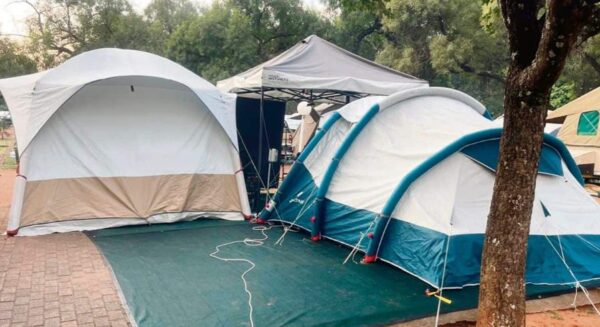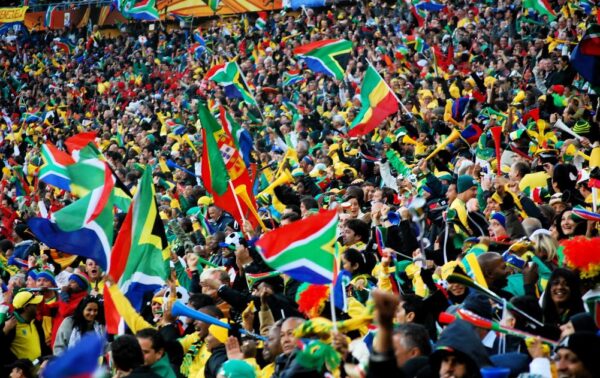Lifestyle
Camping 101: The ultimate guide to camping for beginners

South Africa offers a unique combination of diverse ecosystems, rich wildlife, breathtaking landscapes, and vibrant cultures.
Whether you want to sleep near roaring wildlife on a safari, relax on a pristine beach, or explore rugged mountain trails, camping here opens up unforgettable experiences.
Types of camping you can do in South Africa
1. National Parks & Safari Camping
-
Where: Kruger National Park, Addo Elephant Park, Pilanesberg, Kgalagadi Transfrontier Park
-
Experience: See the Big Five (lion, leopard, elephant, buffalo, rhino) and other wildlife right from your campsite.
-
Facilities: Vary widely — from basic to fully equipped with electricity and ablutions.
-
Booking: Essential months ahead, especially in popular parks.
2. Coastal Camping
-
Where: Garden Route, Wild Coast, KwaZulu-Natal beaches, Cape West Coast
-
Experience: Camp right by the ocean with opportunities for swimming, fishing, and surfing.
-
Considerations: Watch for tides, strong currents, and sudden weather changes.
3. Mountain & Wilderness Camping
-
Where: Drakensberg, Cederberg, Golden Gate Highlands
-
Experience: Cool climate, hiking trails, starry nights.
-
Tips: Pack warm clothes; weather can change quickly.
4. Caravan & Family Campsites
-
Located in many towns and resorts across South Africa, these sites are beginner-friendly and often provide amenities such as electricity, clean water, shops, and swimming pools.
Essential gear for South African camping
-
Shelter: Waterproof, windproof tent with strong pegs (winds can be strong near coasts).
-
Sleeping: Warm sleeping bag (especially for winter and mountain areas), sleeping mat or air mattress, pillow.
-
Clothing: Lightweight clothing for daytime, warm layers for evening, waterproof jacket, sturdy hiking shoes or boots.
-
Sun Protection: Broad-brimmed hat, sunscreen (SPF 30+), sunglasses.
-
Insect Protection: Mosquito repellent (DEET-based is effective), mosquito net for sleeping areas.
-
Cooking: Portable gas stove or braai grill, cooking pots, utensils, cooler box (if car camping), matches/lighter.
-
Lighting: Torch or headlamp with spare batteries.
-
Safety: First aid kit including snake bite kit, whistle, multitool, map/GPS device.
-
Water: Carry sufficient drinking water or water purification tablets if sourcing from streams.
-
Miscellaneous: Trash bags, biodegradable soap, foldable chairs, camera/binoculars.
Food and meal planning
-
Local favorites: Braai meats like boerewors and sosaties, pap (maize porridge), chakalaka (spicy relish), fresh salads.
-
Easy meals: Canned beans, pasta, rice, soups, instant oats, dried fruit, nuts, biltong for snacks.
-
Storage: Keep food sealed and in coolers or airtight containers to avoid attracting animals.
-
Water: Bring plenty and know where to refill safely.
Wildlife & safety considerations
-
Wildlife: South Africa’s wild areas include dangerous animals (lions, elephants, buffalo, snakes).
-
Guidelines: Keep a safe distance from animals, never feed them, and store food securely.
-
Walking: Avoid walking alone at night; always inform someone of your plans.
-
Snakes: Be aware of venomous snakes; watch where you step or place your hands.
-
Park Rules: Always adhere to park regulations and listen to rangers.
Setting up your campsite
-
Choose a flat, dry spot away from watercourses to avoid flooding.
-
Avoid areas under dead or unstable trees.
-
Pitch your tent with the entrance facing away from prevailing wind.
-
Keep cooking and eating area separate from sleeping area.
-
Maintain cleanliness — pack out all rubbish.
Campfire and braai tips
-
Use designated fire rings or pits if available.
-
Only light fires when permitted (some regions have fire bans during dry season).
-
Keep water or sand nearby to extinguish fires.
-
Never leave fires unattended; douse fully before sleep or departure.
-
Enjoy traditional South African braai safely and responsibly.
Local etiquette and environmental responsibility
-
Respect fellow campers by keeping noise levels low, especially at night.
-
Do not disturb wildlife or remove plants and rocks.
-
Pack out all litter and avoid contaminating water sources.
-
Support local communities by purchasing goods and services locally.
-
Use environmentally friendly products where possible.
Best times to camp in South Africa
-
Autumn & Spring (April–May, Sept–Oct): Ideal weather, fewer crowds.
-
Winter (June–August): Cooler days, cold nights especially in mountains. Dry season in many parks means better wildlife viewing.
-
Summer (Nov–March): Hot and humid, rain showers common (especially in inland regions), be cautious of thunderstorms and flooding.
Recommended beginner-friendly campsites
-
Kruger National Park: Well-maintained campsites with good facilities and abundant wildlife.
-
Addo Elephant National Park: Excellent for elephant sightings, beginner-friendly.
-
Tsitsikamma National Park: Forest and ocean camping with trails and waterfalls.
-
De Hoop Nature Reserve: Coastal camping with beautiful beaches and birdwatching.
-
Golden Gate Highlands National Park: Mountain scenery, peaceful campsites.
-
False Bay Caravan Park (Cape Town): Accessible with many amenities for families.
Final tips for first-time campers in South Africa
-
Always book campsites in advance, especially in popular parks.
-
Practice setting up your tent before you leave home.
-
Carry some cash as many rural campsites don’t accept cards.
-
Inform family or friends about your itinerary and expected return.
-
Pack insect repellent and stay vigilant about safety.
-
Be flexible and enjoy the unique outdoor adventure!









